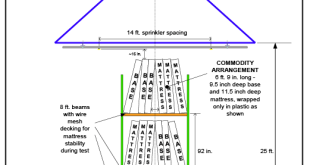CAN YOU MEET THE CHALLENGE?
Each issue, AFSA’s Engineering & Technical Services Department staff present technical challenges. Besides testing yourself and your co-workers, these exercises are excellent preparation for professional certification tests and may count as CEUs. Check with your certification organization. To participate, read through and work the problems.
Answers will be added to this post in April 2023.
MARCH/APRIL QUESTIONS
The following questions are based on NFPA 20, 2022 edition.
1. What are the minimum NFPA 20 requirements for the maximum load of a centrifugal pump?
A. 100 percent of rated capacity at 50 percent of its rated head
B. 150 percent of rated capacity at 65 percent of its rated head
C. 175 percent of rated capacity at 75 percent of its rated head
D. 150 percent of rated capacity at 150 percent of its rated head
2. Which of the following is true regarding diesel fuel tanks?
A. The fuel tank for a diesel driver must be below ground
B. NFPA 20 requires that single-wall tanks be equipped with a spill containment system
C. Diesel fire pumps can use any type of liquid fuel
D. Fuel tanks should contain at least a two-hour supply of fuel at all times
3. What nominal size automatic relief valve is required to be installed on an electric drive fire pump with a rated capacity of 3,000 gpm?
A. 0.75 in.
B. 1 in.
C. 6 in.
D. 10 in.
4. Which of the following terms describes a building where the system demand exceeds the pumping capacity of the fire department?
A. Modular building
B. Mid-rise building
C. Very tall buildingD. High-demand building
5. Which of the following is true regarding a pressure maintenance (jockey) pump?
A. Jockey pumps are not required to be Listed
B. Copper pipe must be used for suction and discharge piping on pressure maintenance pumps
C. Isolation valves are not required with pressure maintenance pumps
D. Jockey pumps must be the turbine type

 Sprinkler Age A Publication of the American Fire Sprinkler Association
Sprinkler Age A Publication of the American Fire Sprinkler Association



